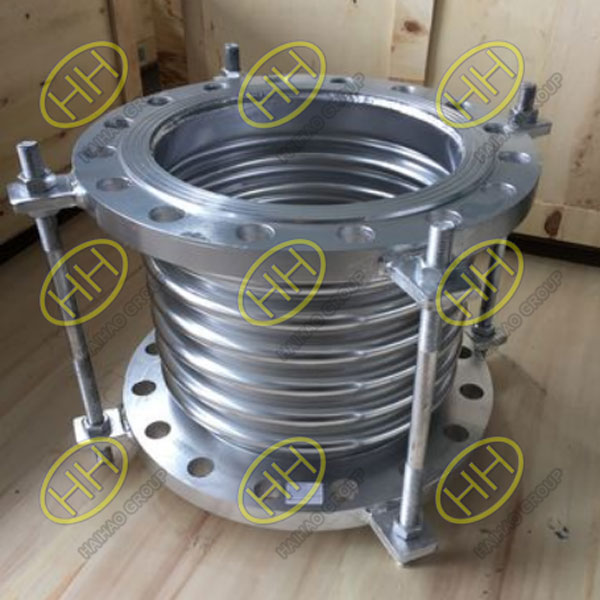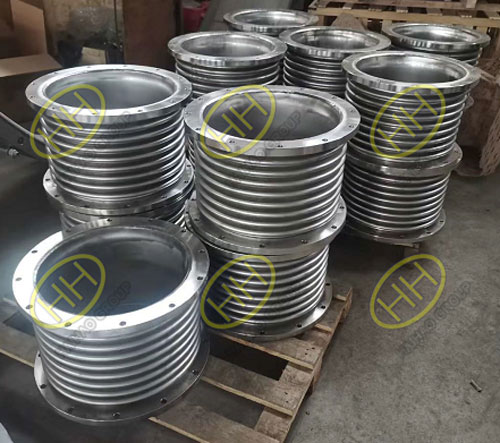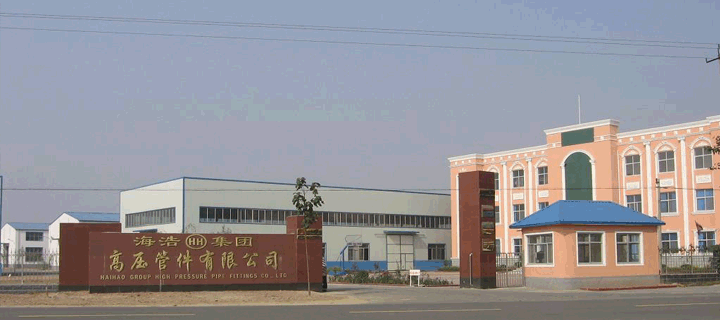Expansion joints, also commonly referred to as compensators or flexible joints, are critical components in piping systems. They are typically composed of a working body made of bellows (an elastic element), along with end pipes, supports, flanges, guide tubes, and other accessories. Expansion joints serve to absorb dimensional changes in pipelines, ducts, and vessels caused by thermal expansion and contraction, as well as to compensate for axial, lateral, and angular displacements. They can also be used for noise reduction and vibration control, making them widely applicable in modern industry.
In heating systems, expansion joints are essential for preventing deformation or damage to pipelines due to thermal elongation or thermal stress when temperatures rise. By compensating for pipeline thermal expansion, they help reduce wall stress and the forces exerted on valves and supporting structures.

bellows expansion joint
Key Points to Consider When Selecting a Bellows Expansion Joint
1.Understand Thermal Displacement Requirements
After determining the appropriate compensator based on the thermal displacement of the pipeline system, users must also provide:
- The type of medium flowing inside the pipeline
- The design pressure of the duct or flue
- The maximum operating temperature
- The cross-sectional dimensions of the duct (length and width)
The selected bellows type (full height or half height) and the number of waves (typically no more than 6 waves for a single bellows section)
This information is crucial for the correct structural design and manufacturing of the expansion joint.
2.Maximum Allowable Expansion per Wave
Full-height bellows (216mm) allow a maximum expansion/contraction of ±24mm per wave.
Half-height bellows (108mm) allow a maximum expansion/contraction of ±12mm per wave.
3.Use of Dust Shields
For clean air ducts or low-dust pipelines, dust shields are generally not necessary.
For high-dust environments, such as flue gas ducts, dust shields should be installed to protect the bellows.

4.Consider Pre-stretching (Cold Pulling)
To reduce the number of bellows waves needed, a cold pull (pre-stretching the bellows by 50%) should be considered during installation. This helps optimize the performance and extend the service life of the expansion joint.
5.Application Scope
Bellows expansion joints are suitable for ducts with a cross-sectional area smaller than 4.6 square meters.
They are ideal when at least one side of the duct’s external dimension is between 0.6m and 1.5m.
Standard full-height metal bellows expansion joints are applicable for all types of smoke and air ducts.
Choosing the right bellows expansion joint involves careful consideration of the system’s thermal movements, operating conditions, and structural requirements. Providing detailed specifications ensures that the expansion joint can be properly designed and manufactured to achieve optimal performance, ensuring safety and longevity in piping and duct systems. Correct selection and installation are vital to prevent pipeline failures and maintain the integrity of industrial operations.
Related Articles:
Types of pipe expansion joints / expansion bellows







